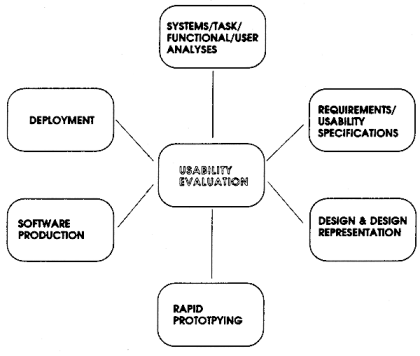User Experience UX

Our global presence will give you plenty of room to work wi One of the major obstacles to adoption of traditional enterprise software is poor user experience take ERP solutions, for example.
A lot of legacy enterprise technologies just aren’t user-friendly and people won't use something that's poorly designed or complex, and that impacts productivity in a negative way.

When it comes to productivity tools for collaboration, analytics and mobile, we understand and improve the user experience and improve collaboration and productivity.
Digital Projects are an Investment
According to the Institute of Electrical and Electronic Engineers (IEEE)2005 research, Site exit disclaimer roughly $1 trillion a year was spent on IT worldwide, with the U.S. government spending more than $60 billion on its roughly 1,200 civilian IT projects and an additional $16 billion on military IT.
User Cantered Design

In the Human Factors International (HFI) video, The ROI of User Experience, Site exit disclaimer Dr. Susan Weinschenk notes that of those IT investments, up to 15% of IT projects are abandoned and at least 50% of a programmers’ time during the project is spent doing rework that is avoidable. Following UCD best practices, helps to identify challenges upfront so that a solution can be found early.
Usability Star Design Model

Avoiding Common Mistakes by building a skilled team and following best practices, you can avoid several of the top 12 reasons IEEE identified for why IT projects fail:
Site exit disclaimer
o Unrealistic or inarticulate project goals
o Inaccurate estimates of needed resources
o Badly defined system requirements
o Poor reporting of the project's status
- Unmanaged risks
o Poor communication among customers, developers, and users
o Use of immature technology
o Inability to handle the project's complexity
o Sloppy development practices
o Poor project management
o Stakeholder politics
o Commercial pressures
HFI recommends following the “10%” rules.The rules of thumb state that 10% of your IT staff should be user experience (UX) professionals and 10% of your budget dedicated to UX. By putting a larger emphasis on UCD principles and practices, you can make iterative improvements and avoid costly large scale rework that does not fit your users or organisations goals.
- Understanding Your Return on Investment (ROI) of UX
At a minimum, success can be defined as the project not being abandoned and it finishing on time and on budget. However, you can go deeper by calculating the cost savings of doing UX upfront and also discussing success in terms of user performance and satisfaction measurements.
- Calculating ROI
Weinschenk, in her white paper Usability: A Business Case Site exit disclaimer outlines three useful equations for calculating cost savings related to:
- Errors
(# of errors) x (avg. repair time) x (employee cost) x (# of employees) = cost savings
Example: (2 errors/week) x (60 mins) x ($30/hour) x (100 employees) = $6,0000/week or $300,000/year
- Cost of Development and Maintenance
(# of changes) x (avg. hrs/change) x (cost of developer) x (4, if late) = cost savings
Example: (20 changes) x (8 hrs each) x ($40/hour) = $6,400 if fixed early or $25,600 if changed late
- Productivity
(Time saved) x (employee cost) x (# of employees) = cost savings
Example: (1 hr/week) x ($30/hr) x (1000 employees) = $30,000/ week or $15,000,000/year
Defining and Measuring Success
In addition, there are some other ways to define and monitor success related to your goals.You can do so by identifying specific targets for various performance and satisfaction goals:
- Goals Measurements Target
- Improve Performance
- Reduce number of user errors
- Increase ease of use
- Increase ease of learning
- Identify Specific Targets for Each Measurement You Choose to Improve
- Increase Exposure
- Increase traffic/ audience size
- Increase number of return visitors when appropriate (retain users)
- Increase number of new visitors (attract users)
- Increase number of visits from search
- Improve Credibility
- Increase user satisfaction
- Increase trust in the system
- Increase number of visits referral
- Reduce Resource Burden
- Reduce development costs
- Reduce development time
- Reduce maintenance costs
- Reduce redesign costs
- Decrease support costs
- Reduce training needed
- Reduce documentation costs
- Increase Sales & Increase product sales
- Increase transactions/ purchases
Testimonials

It is all about the value you bring
"Your input has made a material difference to the Public Cloud project.
Thanks again for all your work. I'm really pleased "
Liz - NHS Education for Scotland (NES)

Best decision ever
" My small business started to grow and I ran into so many overwhelming challenges and road blocks. A friend suggested a business technology partner and mentioned EITS. Best decision ever!"Stan - Cestigs
Our EcoSystem
About Us
ComputerWeekly.com
Government ‘resets’ pension dashboard programme>> Read More
Labour’s 10-year health service plan will open up data sharing
>> Read More
Useful Links
What's happening
Getting DevOps Wrong: Top 5 Mistakes Organizations Make - InformationWeek https://t.co/SgYvt45jkA @einfotechser.com
— EITS Aberdeen (@einfotechser) 12 November 2018
Tech Industry | TechRepublic
E.U. Partners With Venture Capital Firms to Boost Tech Investment>> Read More
10 Reasons Why Your Boss Tunes You Out (Free Download)
>> Read More
Connect With Us
6 Digital Transformation Mistakes To Avoid via @forbes https://t.co/iR0mCkncPk
— EITS Aberdeen (@einfotechser) 19 June 2019
Yahoo News - Latest News & Headlines
Young Thug's lawyer escapes jail time after being held in contempt of court. Here's what to know about the complex RICO trial.>> Read More
Ariana Grande’s ‘Eternal Sunshine’ dropped at midnight. Here are the Easter eggs fans have noticed so far.
>> Read More
Engadget is a web magazine with obsessive daily coverage of everything new in gadgets and consumer electronics
The Ring Stick Up Cam is back on sale for a record-low price>> Read More
© 2021 Expertise Info-Tech Services Ltd, All rights reserved - www.btsmart.co.uk
















